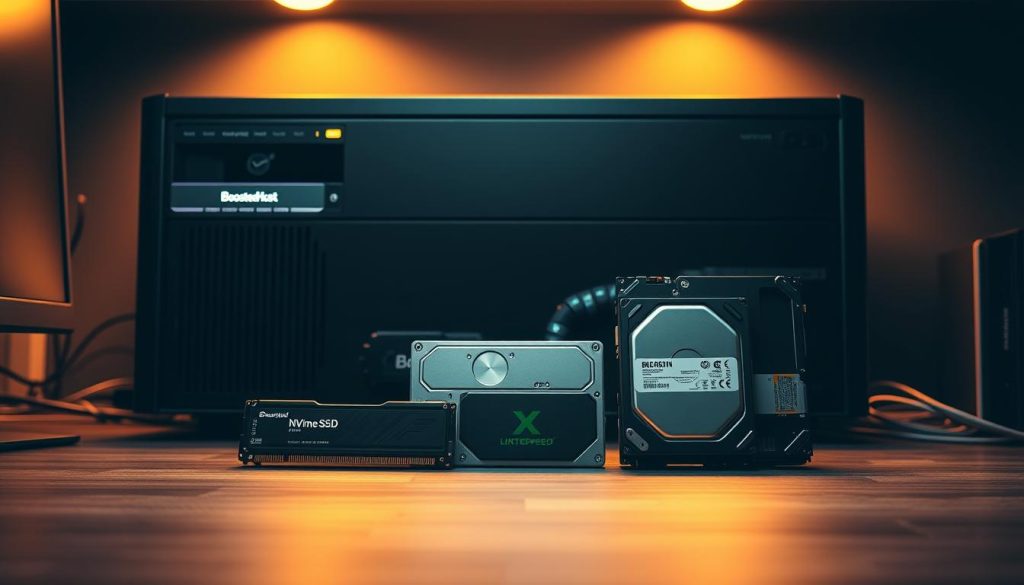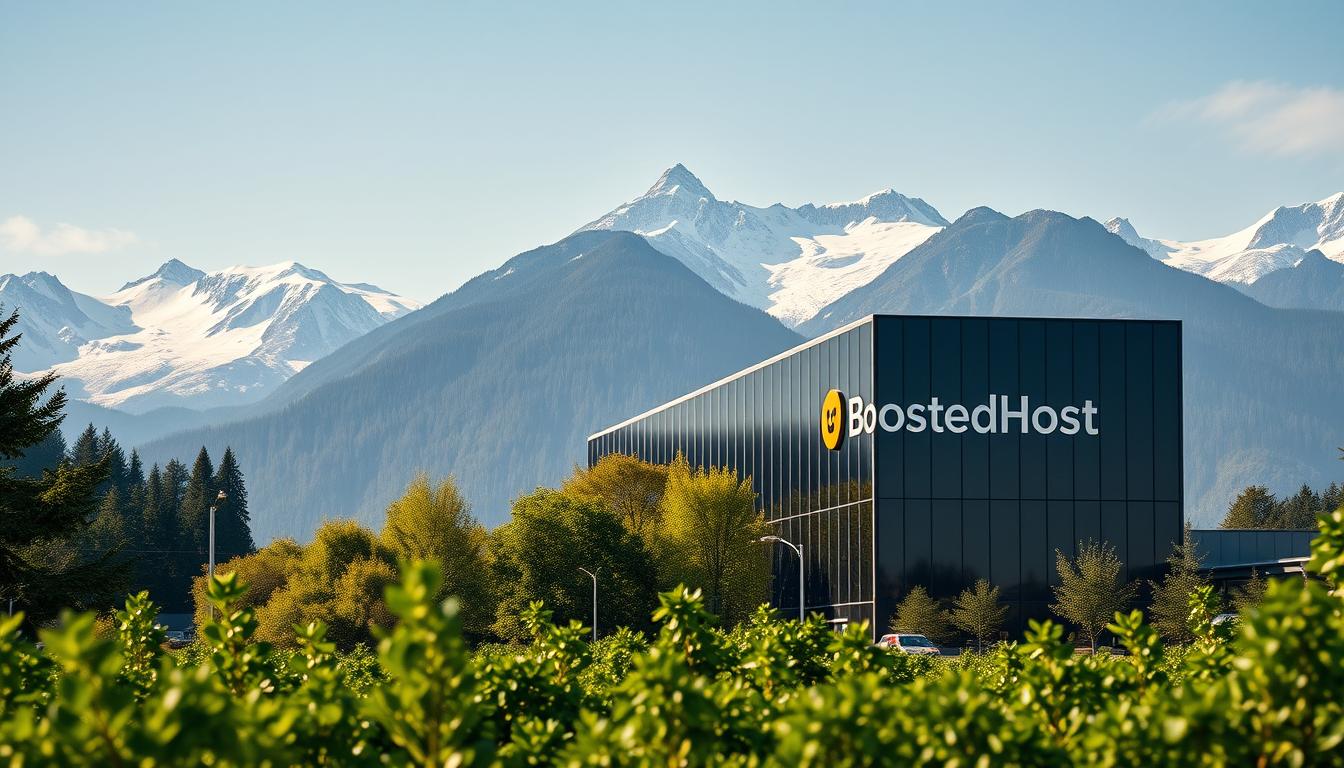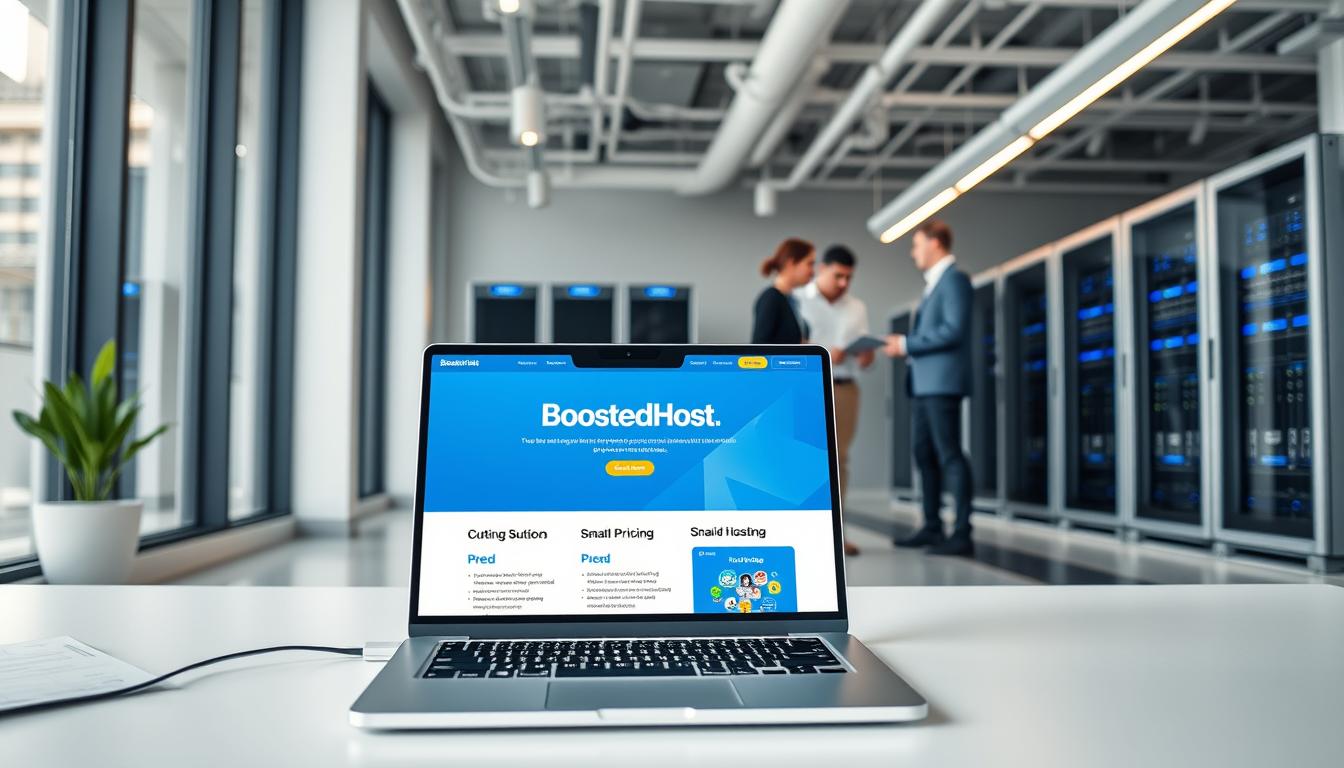We’ve all stared at a slow website and felt the cost ripple—lost sales, rising bounce rates, sleepless nights. Today we cut through marketing noise and compare two very different hosts so you can choose with confidence.
This head-to-head focuses on real needs: speed, uptime, security, and total cost for site owners. We test performance metrics—szybkość działania, TTFB, and uptime—then weigh backups, malware protection, and support response.
One provider promises ultra-fast LiteSpeed servers, global CDN reach, daily backups, and an AI site builder—clear advantages for fast, scalable web hosting. The other brings strong national credentials, ISO 27001 security, Anycast DNS, and robust DDoS defenses.
We’ll rank features that move the needle: caching stacks, HTTP/3, developer support for PHP, Node.js, and Python, plus honest pricing over a 12-month horizon. Use this practical guide to pick the right plan for a storefront, blog, or agency portfolio.
Key Takeaways
- We prioritize performance—szybkość działania drives conversions and SEO.
- One vendor excels in global speed and AI tools; the other shines in certified security.
- Compare true costs: first-year promos, renewals, and 12-month ownership.
- Developers get modern stacks: PHP, Node.js, Python, and WooCommerce support.
- Explore the detailed hosting plans and features at our linked page for a closer look: premium web hosting plans.
BoostedHost vs nazwa.pl: who leads for performance-focused web hosting in 2025?
Performance hosting is about real metrics: TTFB, caching, and global latency—let’s compare those facts.
Quick snapshot: one provider offers ultra-fast LiteSpeed servers, global CDN reach, daily backups, Orbit AI site creation, and 24/7 expert support. The other delivers a Poland-centered cloud with 5 GHz CPUs, a 4 vCPU baseline, Anycast DNS, ISO 27001, and a 99.9% SLA.
We lay out use cases so you can pick the right plan. If you’re zastanawiasz się which option fits, look at real needs: global speed, local compliance, or predictable pricing.
Quick snapshot: what each provider is known for
- Speed-first: LiteSpeed, HTTP/3, and a multi-continent CDN for sub-200ms global TTFB and 99.99% uptime.
- Poland-centric cloud: strong local network capacity (200 Gbps), Anycast DNS, free SSL, backups, and a 30-day trial.
Use cases: blogs, sklepów internetowych, WooCommerce, and agency workloads
For blogs and lead-gen strony internetowe, both platforms work. Caching plus CDN usually gives faster first loads globally.
For sklepów internetowych and WooCommerce, the LiteSpeed stack and built-in protection favor consistent checkout flows. For agencies managing many sites dla twojej client base, transparent pricing and fast support reduce friction.

| Feature | Speed & Performance | Local & Compliance | Best use case |
|---|---|---|---|
| Infrastructure | LiteSpeed, global CDN, sub-200ms TTFB | 5 GHz CPUs, 4 vCPU baseline, Anycast DNS | Global sites, high-traffic stores |
| Uptime & SLA | 99.99% uptime guarantee | 99.9% SLA with 30-day trial | Mission-critical apps vs Poland-only platforms |
| Extras | Daily backups, Orbit AI site builder, 24/7 support | Free SSL, backups, ISO 27001 compliance | Rapid deployment vs corporate compliance |
Bottom line: If you ask jaki hosting leads pod względem raw performance, the speed-first option wins. If local presence and certification matter, the Poland-centric cloud holds its ground in any credible ranking hostingów.
Speed and uptime: LiteSpeed power vs cloud with 5 GHz CPUs
Speed wins attention; we measure how quickly pages respond around the world.
Global TTFB benchmarks: The LiteSpeed stack plus an edge CDN routinely hits sub-200ms TTFB, so users feel snappy loads from the first byte. For international sites, that matters for conversions and SEO.
Regional compute: The Poland-centered cloud runs on 5 GHz ghz cpu cores with a 4 vCPU guarantee. That gives solid processing for compute-bound tasks near Europe and Poland.
Uptime in practice: A 99.99% uptime average cuts potential downtime far more than a 99.9% SLA. Fewer minutes offline means fewer lost sales and fewer emergency restores.
Real-world accelerators: Both stacks use szybkie dyski ssd and ssd nvme storage to deliver high IOPS. Add HTTP/3 and an optional serwer redis przyspieszający to speed dynamic pages and carts.
Caching and CDN reach: Server-level LiteSpeed caching plus multi-continent POPs gives global edge delivery. Anycast DNS and a 200 Gbps backbone improve regional DNS and routing, but are not a full CDN substitute.

| Metric | Global Edge | Regional Cloud | Best fit |
|---|---|---|---|
| TTFB | sub-200ms (LiteSpeed + CDN) | low latency in Poland/EU (5 GHz ghz cpu) | Global audiences vs Poland-focused |
| Uptime | 99.99% average | 99.9% SLA | Always-on commerce vs regional apps |
| Acceleration | HTTP/3, Redis support, szybkie dyski ssd | Anycast DNS, 200 Gbps backbone, free backups | Dynamic ecommerce vs compliance-centered hosting |
Security, backups, and reliability features you get out of the box
Good hosting makes security invisible until you need it; then it must act fast. We focus on default protections that lower risk and speed recovery. That matters for any strona internetowa that handles customers or leads.
Core protections: Every plan includes free SSL and automated malware scanning. One provider adds global CDN and WAF-level hardening. The other offers extended DoS/DDoS shields and a 30-day okres testowy to validate defenses.
Backup and recovery: Daily kopie zapasowe mean rollbacks take minutes. Immutable snapshots on dyski ssd storage improve integrity and shorten RTOs. We also look at retention windows and the ease of restoring kopii zapasowych.
- Free SSL and malware scanning on all plans protect your strony internetowej without extra fees.
- Daily backups plus immutable storage speed recovery after bad updates.
- Integrated WAF filters OWASP threats and reduces bot noise.
Result: We prefer hosts that include backups, SSL, and active hardening by default. That approach jest bardzo effective at reducing manual ops and keeping sites online.
Pricing transparency and total cost of ownership
Your real cost of hosting shows up at renewal time — not just during promo windows.
We compare clear, all-in pricing against attractive first-year offers that jump sharply at odnowić domenę and plan renewal. Look beyond the promo to model złotych rocznie across two cycles.
- What’s bundled: SSL, global CDN, daily backups, malware protection, and 24/7 support reduce add-on spend.
- First-year promos: Some providers list 123–922.50 PLN for pierwszy rok, then 600–1800 PLN at renewal. Domain ceny domen can be 5 PLN for pierwszy rok but 200 PLN to odnowić domenę.
- Predictable billing: When cena jest transparent, you budget with confidence and avoid surprise invoices.
| Item | Typical first year (PLN) | Renewal/year (PLN) | Notes |
|---|---|---|---|
| Shared hosting plan | 123–922.50 | 600–1,800 | Promos lower pierwszy rok; renewals spike |
| .pl domain | 5 | 200 | Check ceny domen and odnowić domenę fees |
| Extras (CDN, backups) | Included (transparent) | Often paid | Bundled reduces złotych rocznie |
| Estimated blended cost | Model promo + renewal | Average per year | Use two-year view to choose hosting wybrać |
Bottom line: Factor renewals and domain odnowienia into any hosting decision. We recommend modeling at least one renewal cycle to see the true ranking of cost and value before you commit.
Developer stack, CMS focus, and AI tools
Developers and site owners need stacks that move fast and scale without surprises. We show which runtimes, caching layers, and quick-build tools matter for modern projects.
Stacks supported
PHP, Node.js, and Python run with CLI access and Git workflows. Managed MySQL baz danych pairs with SSD NVMe storage for low latency. Optional serwer redis supports session caching and query offload.
Managed WordPress and WooCommerce
Pod WordPress installs get LiteSpeed tuning, HTTP/3, and optional redis przyspieszający to speed logged-in users and carts. SSD NVMe storage plus tuned pamięć ram and worker limits reduce spikes during sales.
Orbit AI Website Builder vs standard kreator stron
The AI kreator stron launches a professional site in minutes. Teams then scale to WordPress or headless Node.js stacks as needs grow. Agencies benefit from repeatable staging, SSH, and automated backups.
| Feature | What it delivers | Best for |
|---|---|---|
| Runtimes | PHP, Node.js, Python with Git/SSH | Custom apps, headless builds |
| Caching | LiteSpeed, HTTP/3, serwer redis | WordPress, WooCommerce speed |
| Storage & DB | SSD NVMe + MySQL baz danych | Database-heavy sites, low I/O latency |
| Builder & Tools | Orbit AI kreator stron, staging, CLI | Rapid launches, agency workflows |
Support responsiveness and customer satisfaction
When seconds matter, help that acts fast saves revenue and stress.
We expect 24/7 expert support that fixes issues—not just files tickets. Rapid routing to engineers cuts downtime for your strony internetowej and keeps conversions steady.
24/7 expert support SLAs: One provider resolves most requests in minutes under its SLA. That speed reduces lost sales and shrinks incident windows that can otherwise last przez dni.
Channels and response quality
nazwa.pl lists full coverage via email, phone, and chat. Those channels cover routine needs for a large firmy hostingowej.
We value quality over queues. Fast first-meaningful-response and accurate fixes matter more than scripted replies. You możesz sprawdzić responsiveness during trials—test migrations and complex failures, not just password resets.
- Support speed is mission critical: minutes-to-fix lowers risk for an active strony internetowej.
- Multi-channel access: live chat for quick wins, email for logs, phone for escalations.
- Expert routing: engineers handle root-cause and prevention, reducing repeat tickets.
| Aspect | Response speed | Channels | Customer benefit |
|---|---|---|---|
| Typical SLA | Minutes for urgent tickets | Chat, email, phone | Lower downtime, faster revenue recovery |
| Escalation | Expert routing immediately | 24/7 coverage | Root-cause fixes, fewer repeat incidents |
| Trial checks | Real test of response | Use migration & complex scenarios | You możesz sprawdzić real-world support |
| Reliability | Issues solved quickly, not deferred przez dni | Proactive alerts + channels | Higher satisfaction, better ranking in market reviews |
Global footprint and data center choices
Physical proximity to users still drives speed and SEO; footprint matters.
We compare a multi‑region network across Switzerland, the USA, Europe, and Asia with a Poland‑centric cloud built for domestic traffic. The multi‑region option hits sub‑200ms global TTFB. That reduces latency for distant visitors and improves Core Web Vitals.
The Poland‑focused cloud uses Anycast DNS and a 200 Gbps backbone. It serves local audiences with strong capacity and solid regional routing. For businesses centered on Polish clients, that closeness boosts perceived speed and reliability.
- Global audiences: Multi‑region data centers place content near users, lowering p95 response times and aiding international SEO.
- Poland‑first workloads: Local cloud and Anycast DNS improve routing for domestic traffic and help with compliance.
- Redundancy & compliance: Swiss and EU locations add data‑residency choices and DR options beyond a single country.
Decide jaki hosting wybrać by mapping your customer locations. Physics still matters—fewer hops equal faster pages and higher conversions.
| Aspect | Multi‑region footprint | Poland‑centric cloud |
|---|---|---|
| Primary regions | Switzerland, USA, Europe, Asia | Poland (local cloud) |
| Latency (typical) | Sub‑200ms global TTFB | Low latency for Poland/EU |
| Network & DNS | Global CDN + edge routing | Anycast DNS, 200 Gbps backbone |
| Best fit | International stores, agencies hosting dla clients worldwide | Local businesses, compliance‑focused deployments |
Conclusion
We close by weighing practical trade-offs so you pick hosting that truly moves the needle for your site.
For global web hosting and the best szybkość działania, we recommend the performance leader. It delivers sub‑200ms TTFB, 99.99% uptime, daily kopie zapasowe, and a clear pricing model that lowers złotych rocznie over time.
The Poland‑focused provider holds its own for local projects. It brings ISO 27001, 5 GHz CPUs, Anycast DNS, and a 30‑day okres testowy—a solid choice if your audience is largely domestic.
If you’re still zastanawiasz się jaki hosting wybrać, match audience geography and TCO. For fast global sites and predictable costs, see our premium web hosting page. For Poland‑centric compliance, consider the local cloud option.
FAQ
Which provider is faster for real-world websites — LiteSpeed with NVMe or cloud with 5 GHz CPUs?
Both approaches deliver speed, but the winner depends on workload. LiteSpeed + NVMe excels for PHP sites and WordPress/WooCommerce thanks to fast filesystem I/O and built-in caching. A cloud stack with 5 GHz CPUs shines for heavy concurrent processes, Node.js apps, and large database queries. Consider memory (RAM), Redis acceleration, and CDN reach when choosing.
How important are SSD NVMe disks and Redis for my site’s performance?
Very important. NVMe SSDs cut storage latency and improve page build times. Redis provides in-memory caching for DB queries, object cache, and sessions — slashing TTFB and reducing PHP/DB load. For online stores and high-traffic blogs, NVMe + Redis gives the biggest user-facing gains.
What uptime can we realistically expect — 99.99% vs 99.9% SLA?
99.99% means about 52 minutes of downtime per year; 99.9% allows roughly 8.8 hours. Look beyond the headline SLA. Check historical uptime reports, maintenance windows, and how credits or support handle incidents. Real-world resilience also depends on backups, DDoS protection, and multi‑AZ architecture.
Do hosts include daily backups and a simple restore process?
Many hosts now include daily kopie zapasowe, plus snapshot retention tiers. Verify retention length, restore speed, and whether restores cost extra. Automated daily backups with easy one-click restores are critical for stores and agency workloads.
Is HTTP/3 and a global CDN worth prioritizing?
Yes. HTTP/3 reduces connection setup time and improves mobile performance. A global CDN lowers TTFB and offloads static assets. If your audience is international, built-in CDN beats limited regional Anycast setups.
How transparent are pricing and renewals — any hidden fees to watch for?
Watch for first-year promos, domain registration/renewal fees, and add-ons like extended backups or premium migrations. Good providers show total cost of ownership: pierwsz y rok promo price, then yearly odnowić domain and hosting renewal rates in złotych rocznie or your currency.
Can I test the hosting before committing — is there an okres testowy?
Many hosts offer trial windows or money-back guarantees. Check limitations — some trials exclude high-performance features like Redis or enterprise CDN. A proper okres testowy lets you benchmark TTFB, CDN, and real plugin behavior under load.
Which stack should we choose for a WordPress shop with WooCommerce?
Pick a stack optimized for PHP and MySQL/baz danych with fast NVMe storage, Redis object caching, and WooCommerce-tuned PHP workers. Managed WordPress plans often include these optimizations and free migrations — ideal for stores and agencies.
How does support quality differ — are SLAs for response time reliable?
Look for 24/7 expert support with documented SLAs and multi-channel access: chat, email, phone. Quick first response is useful, but resolution time matters more. Check reviews for ticket handling and developer-level troubleshooting.
Are DDoS protection and a WAF included, or are they paid extras?
Some hosts include basic DDoS mitigation and WAF on all plans. Enterprise-grade protection may cost extra. Confirm what’s standard: layer 3/4 mitigation, application-layer WAF rules, and automatic threat updates.
What data center locations should we pick for global reach?
Choose a region close to your primary audience for lowest latency. For global traffic, pick providers with multiple regions — Switzerland, USA, Europe, and Asia options or a strong Poland-centric cloud if your audience is local. CDN and Anycast DNS expand effective reach.
How do developer needs influence the hosting choice — PHP, Node.js, Python, databases?
Ensure the host supports your stack: PHP versions, Node.js, Python, MySQL/Postgres, Redis. Developer-friendly features — SSH, Git deploys, staging environments, and API access — speed up workflows and reduce vendor lock-in.
Will migrating my site be free and straightforward?
Many hosts offer free migration services for WordPress and databases. Confirm scope: full site, emails, and DNS changes. A managed migration with rollback and testing minimizes downtime and risk.
Can I run multiple stores or agency client sites on one account?
Yes, with plans that include staging, isolated resource pools, and adequate RAM and CPU. For many clients, use separate sites or containers to prevent a single noisy neighbor from affecting all sites.
How do we estimate yearly costs for a busy e‑commerce site?
Factor in hosting plan price, SSL (if not free), CDN tier, backups, Redis, domain renewals, and support extras. Compare pierwszy rok promo to the regular renewal cost to compute total in złotych rocznie or your preferred currency.




